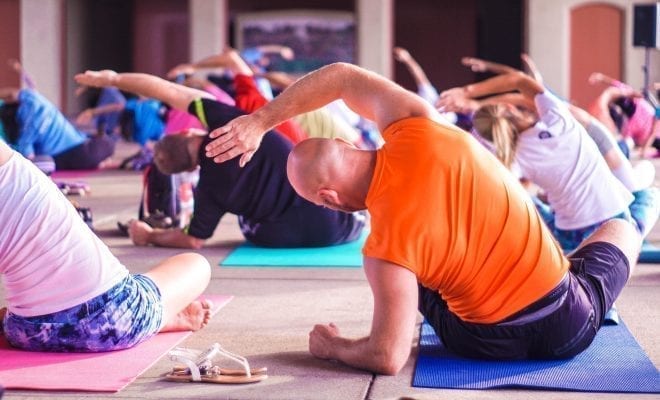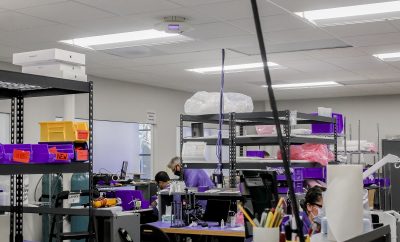
Lifestyle
Workouts for Every Age
Joella Hopkins is the Vice President of Group Fitness at EōS Fitness, which has 9 high value, low price gyms and counting in Southern California, including San Diego. She has over 20 years of experience in the fitness industry.
Reality check! We need to work out differently as we age.
Exercise is something that we should all engage in for a lifetime. From the time we are little children, we realize our bodies are designed to move. Unfortunately, over the years our bodies also change drastically in many ways. Our bodies eventually will let us know that we are just not able to do what we used to do.
Accepting the “no pain, no gain” way of working out is outdated and just plain wrong.
Here’s the good news: continuing to exercise the right way over the decades can actually slow down the aging process making us look and feel younger. But we need to start making some strategic changes, and every ten years or so there are key things to think about. If you continue to work out in your 50s the same way you did in your 30s, you will eventually end up getting injured or having pain. Your workouts should be challenging, both mentally and physically.

Awareness is key
Being aware means:
- That your goal should be training in a way over the decades where your body can stay healthy and fit for a lifetime.
- That you can’t eat everything in sight like you did in your 20s and not gain weight when you’re in your 40s.
- That more recovery, stretching, and low impact exercises can actually keep you mobile longer as you age.
- That it is vital to focus on strength, coordination, cardiovascular fitness, and mobility at every age.
- That 20-year-olds have more energy and fewer injuries than someone in their 50s.
- That 40-year-olds have different priorities and obstacles than someone in their 70s.
20s – the decade of “There’s nothing I can’t do!”
You rock climb, do daily HIIT training classes, play full contact sports – all after burning the candle at both ends and making bad food/drink choices. The great thing about being in your 20s is that your body is so strong, you can get away with abusing it. This is the time to try just about anything that piques your interest. The habits we create in our 20s stay with us over the years. Wear good, supportive shoes, take recovery days, try to eat healthy 80% of the time, limit the alcohol and focus on getting enough sleep. You’ll thank yourself later.

30s – The decade of “Why can’t I get this extra 10 lbs off?”
Your basal metabolism drops by 1 to 2% every decade, you start noticing that weight doesn’t come off quite as easily as it used to. Because lean muscle begins to decrease and body fat increases, you don’t need as many calories to sustain yourself so you may not be able to continue to eat like you did in your 20s. This is a great decade to add in some yoga and flexibility training as well. This might also be a time in your life where you are starting a family or new career, and probably have less free time in your schedule. It is imperative that you don’t skip exercise because you “don’t have time”.

40s – The decade of “hormones, stress, and belly fat”
This decade is a game changer for most people. It’s when you really begin to notice things changing with your body. Hormones are starting to kick in and gravity can hit you hard in areas of your body you’ve never struggled with before. With family and work stress, cortisol is releasing in your body making weight gain in the mid-section a new battle to fight. This decade it is absolutely essential you pull back on the pounding on your joints, tendons and ligaments. You can still do some limited high impact exercising – but moderation and recovery are key.

50s, 60s and beyond – The decades of “Staying active for a better quality of life”
The focus in these later years should be all about prolonging the quality of your life. Because problems like arthritis, bad knees, and spinal stenosis become common in this decade, you need to definitely start choosing fewer taxing exercises. Brisk walking, cycling, swimming – even golfing (sans the golf cart) and tennis are great exercise activities to take up. Strength training is absolutely essential to help with bone density which is a huge focus (particularly with women) later in life.
Life is a journey and change is inevitable
Bottom line, life is a journey we all go through. People desire to be healthy and have the highest quality of life in the time they are given. Train smart and make exercise a top priority throughout every decade. You may not always be able to do everything you used to do, but you will be able to find things you can do and enjoy.





1 Comment